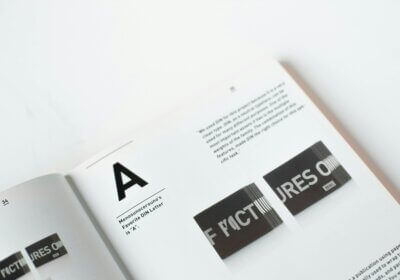Running an online store can be tough. A lot of other companies are also trying to attract the same customers as you are. Great product images, reasonable prices, and an easy-to-navigate website are the key things that everyone knows matter. However, many internet companies fail to take advantage of a hidden weapon: fonts. The words you choose to use on your website can greatly influence whether a visitor decides to buy or not.
Reflect about it. Ever felt like something wasn’t quite right when you were on a website? Perhaps the font was too small, or the overall design seemed somewhat poor? The fonts probably had an impact. With the correct fonts, your website can take on an air of professionalism, reliability, and even style. They can also simplify your product descriptions and make it easy for buyers to locate what they need. In the end, that leads to more sales.
Learn how to use fonts to your advantage in this post on e-commerce. In this article, we will explain the importance of fonts and how they impact the perception of your brand. It’s not just about selecting an attractive item (though that is important!). The key is to pick legible fonts that convey the spirit of your business and lead visitors to the checkout page where they may make a purchase.
Don’t worry, we’ll explain everything, even the fundamentals like the distinction between serif and sans-serif typefaces. Additionally, we will cover ways to guarantee that your website displays properly across all devices, be it a desktop computer or a mobile phone. Our primary goal is to provide you with practical recommendations that you can implement immediately to improve the fonts on your website and begin to observe positive improvements. Continue reading if you’re prepared to maximize the potential of typography and transform your online store into a conversion engine!
The psychology of fonts and how they influence user perception
Fonts are more than the physical representation of letters. It’s a visual language that has profound emotional resonance. They can make us feel something, change our perspective on something, and transmit personality all at the same time. Just think about it: a clean, straight font conveys professionalism and efficiency, while a playful, handwritten-style font might give off a pleasant, playful vibe. This is the power of font psychology in action: the way various fonts gently affect our perception.
Serif fonts are one of the main types of fonts. The little decorative strokes, or serifs, that terminate each letter in these fonts are what set them apart. Serif fonts are commonly associated with reliability, authority, and tradition. Books and newspapers often use them because of how readable they are. On the other hand, depending on the screen size and the quality of the device, they could be difficult to read. Famous serif fonts include Georgia, Times New Roman, and the refined Playfair Display.
Finally, we have sans-serif typefaces. The absence of decorated serifs is seen in the name of these fonts. They have a reputation for being friendly, approachable, and contemporary. Website body content often uses sans-serif fonts since they are widely believed to be very readable on screen. People usually use sans-serif typefaces like Roboto, Open Sans, Helvetica, and Arial.
One further category of typefaces is script fonts. These typefaces seem like handwriting and can make a design more unique, original to the user, or elegant. Having said that, they aren’t always legible, particularly in long passages of text, due to their attempts to imitate handwriting. This is why you should only use script typefaces minimally, such in logos or for small headlines. Some examples of script fonts are Lobster, Pacifico, and Brush Script.
Display fonts are the last category. Typically considerably more ornamental and eye-catching than other font groups, these were created with higher sizes in mind. Headlines, banners, and other eye-catching parts of a website or design are ideal places to use them. But they aren’t good for body text because their decorative quality makes them hard to read at smaller sizes. Bold Impact, geometric Bebas Neue, and flexible Montserrat are a few examples of display fonts.
Best practices optimizing fonts for e-commerce conversions
There are best practices to follow when selecting fonts because of the impact on conversion rates. Brand alignment is an essential aspect to think about. Your brand’s personality and the people you’re trying to reach should inform your font selection. As an illustration, a tech-focused corporation can go for contemporary sans-serif fonts to portray innovation, but a luxury brand could go for exquisite serif fonts to show sophistication.
It is also crucial to consider your intended audience. Think about your target audience’s demographics. Fonts that are easy to read, especially at a bigger size, may appeal to an older demographic. A further critical component of font optimization is the establishment of a distinct visual hierarchy. To draw attention to key points and direct the reader’s look, use a variety of font types, sizes, and weights (bold, regular etc). Both the headings and the subtitles should be easily distinguishable from the main text. For best readability, make sure the text color stands out enough from the backdrop color.
White space is quite powerful. Your text’s legibility is greatly affected by the white space surrounding it, including the spaces between lines, letters, and paragraphs. Websites with sufficient whitespace are easier on the eyes and more pleasant to read. Be consistent as well. Be sure to use the same fonts all over your website. A disorganized and unprofessional appearance could result from using an excessive number of fonts. Limit yourself to no more than two or three fonts that complement one another.
Do some testing and monitor your conversion rates to find out for sure which fonts are ideal for your online store. Finding the most popular font combinations is as easy as doing A/B testing, which involves displaying two or more versions of your website to various groups of people. Another important consideration is mobile optimization. Verify that the fonts you’ve selected display properly on mobile devices. For screens with smaller displays, you might have to play about with the font size and line height. Think about making your online fonts mobile-friendly or using web-safe fonts.
When compared to the built-in typefaces of most web browsers, the selection of web fonts is far more extensive. But if you don’t want your website’s loading time to suffer, you must optimize web fonts for performance. Make use of font loading algorithms and select browser-compatible font formats. Lastly, accessibility needs to take precedence. People with difficulties with vision should be able to read the fonts you choose. When designing with big blocks of text, stay away from fancy or script fonts and make sure there’s enough color contrast.
Creating harmony on your website using font combinations
Using just one font can have its uses, but a combination of two or three complimentary fonts usually results in a more visually appealing and engaging design. Your website’s aesthetics and readability can both be improved by the careful use of font mixing. Combining serif and sans-serif fonts is a common practice. Serif fonts for headings with sans-serif fonts for the main body text is a classic combination. The writing becomes more readable and balanced as a result. While the sans-serif font gives the body text a clean, contemporary appearance, the serif font gives the headings a hint of tradition and formality.
Combining two distinct sans-serif typefaces is another excellent method. Particularly if the selected typefaces have unique characters but match in style, this can produce a modern and minimalist appearance. Mixing geometric and humanistic sans-serif fonts is one possible combination. The most important thing is to choose fonts that complement each other visually, even if they are slightly different. This method can improve reading while also enhancing visual appeal.
A great technique to create a graphical structure is to use a display font for headings and a highly legible font for body content. Headlines and other important features frequently make use of display typefaces because of their eye-catching style. You can highlight key points while keeping the main text legible by using a display font together with a clear and legible font for the body text. With these two elements working together, you can easily distinguish between multiple layers of content on your website.
Keep in mind that your brand and intended demographic will determine the finest options when it comes to online store font selections. Yet, there are a handful of typefaces that are universally thought of as being adaptable and perfect for e-commerce websites. Open Sans, Roboto, Lato, Montserrat, PT Sans, and Source Sans Pro are among the most well-liked choices for body text. Every one of these typefaces is incredibly readable and versatile. Some good options for headings are the serif Playfair Display, the sans-serif Montserrat, the display typeface Bebas Neue, and the another display font Oswald. You may discover the ideal font for your company from these many options, which vary from classic and refined to contemporary and bold.
Typography is crucial in e-commerce, because first impressions and conversions matter. A successful online store must choose and combine fonts well. As we’ve seen, typefaces are a visual language that conveys brand personality, inspires emotions, and leads the user experience. Consider brand alignment, target audience, readability, structure, and accessibility to design a professional website that invites visitors to explore, interact, and buy. The appropriate fonts can quietly but effectively influence user behavior, increasing conversions and brand presence. Think carefully about typography—it’s an investment that can pay well.
Don’t worry if you find a font you adore online but can’t name it! WhatFontIs.com can save you. In seconds, this reliable resource can recognize almost any font. Simply take a screenshot of the text using the desired font to WhatFontIs.com, and its strong search methods will reveal the font’s name and links to where you may find it. This lets you effortlessly include innovative fonts into your designs, making your e-commerce website visually appealing and conversion optimized.



